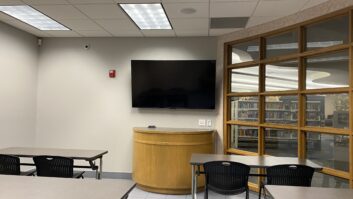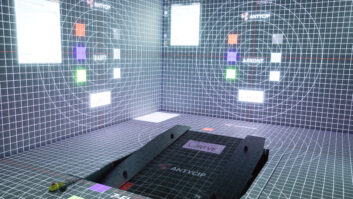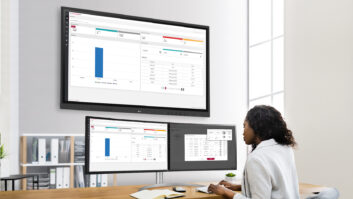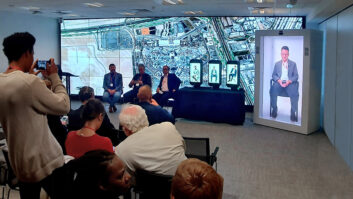In the second part of our look at ‘resimercial’ installations, Kevin Hilton talks to manufacturers and integrators who are taking the best elements from the commercial and consumer markets to produce very specific results. You can read part one of our investigation here.
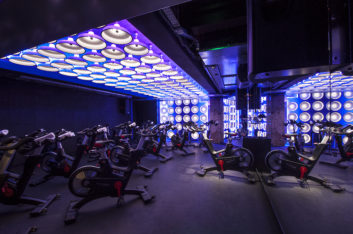 Business – any kind of business – is about identifying a demand and building a market. As a company grows it will expand and usually look at moving into what are now known as vertical markets. While shifting into one of these is logical and expected – hence the crossovers between pro AV, live sound, recording, installation and broadcast – the barrier dividing professional/commercial technologies and more domestic, consumer related technology is still there, even if it is not as impenetrable as it was in the past.
Business – any kind of business – is about identifying a demand and building a market. As a company grows it will expand and usually look at moving into what are now known as vertical markets. While shifting into one of these is logical and expected – hence the crossovers between pro AV, live sound, recording, installation and broadcast – the barrier dividing professional/commercial technologies and more domestic, consumer related technology is still there, even if it is not as impenetrable as it was in the past.
As discussed in the last issue of Installation, the areas of pro AV/commercial/enterprise systems integration and residential installation have come closer together in recent years. Products and technologies that were once considered solely for use in home cinema and domestic automation are now being seen more often in bar, restaurant and even office/boardroom environments. There has also been a similar movement in the opposite direction, with pro equipment now being used as part of systems in people’s homes.
RESIMERCIAL REVOLUTION
All this now comes under the umbrella of ‘resimercial’, which does sum up the new category even if it probably will not be named the Oxford English Dictionary’s Word of the Year any time soon! While this label was not applied back then, what resimercial describes was already beginning to happen during the 1990s. Among the first companies to recognise this and begin actively developing products for both pro and domestic applications was Crestron.
The automation and control specialist started out focused on the professional market but, as
Stijn Ooms, director of technology at Crestron Europe, explains, it made the crossover around 1996-97 with an innovative smart touch screen for the home.
“It was driven by the commercial industry,” says Ooms. “We were mainly doing boardrooms where executives would have a touch panel in front of them to control everything. But when they got home and sat on the couch to watch TV, they had several remotes to control the VCR or the satellite receiver. After conversations with people about this Crestron developed a two-way RF touch panel that would go in a credenza rather than a 19in rack.”
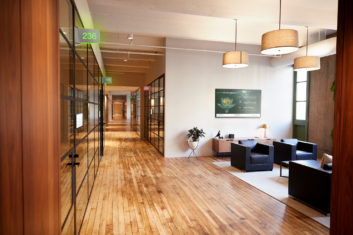 From that point onwards, Ooms says, Crestron saw what is now known as resimercial continue to grow. Other pro manufacturers have since targeted what has become a sizable and technologically adventurous area that is now seeing the consumer side influencing the equipment being used in offices and other commercial premises. Ooms attributes this last factor to the tech-awareness of millennials, which now account for a considerable percentage of the general workforce. “Millennials are used to technology and expect what they use in their work environment to be as fluent and advanced as the gear they have in their home life.”
From that point onwards, Ooms says, Crestron saw what is now known as resimercial continue to grow. Other pro manufacturers have since targeted what has become a sizable and technologically adventurous area that is now seeing the consumer side influencing the equipment being used in offices and other commercial premises. Ooms attributes this last factor to the tech-awareness of millennials, which now account for a considerable percentage of the general workforce. “Millennials are used to technology and expect what they use in their work environment to be as fluent and advanced as the gear they have in their home life.”
This is illustrated by Crestron being asked to implement its DM NAX audio distribution system, originally designed for the residential sector, in corporate situations. Ooms says some “tweaking and tuning” was done, including the addition of Dante audio over IP (AoIP) capability and USB connections for microphones, to produce a version for business.
DANTE DEMAND
Dante would be considered a purely professional technology, one that is now widely used in both commercial installations and broadcasting. But its developer, Audinate, is seeing demand for Dante –
as well as other pro equipment – in residential.
“Technologies from professional arenas find their way into the consumer market as demands increase and complexities come down,” says Brad Price, senior product marketing manager at Audinate. “In order to match the expectations of the consumer market, many of these technologies are streamlined and polished to provide high quality user experiences and appeal to a less technical audience.”
Price continues that this has happened with AVoIP, which is now being seen in the residential market. “While the ideas behind AV-over-IP may seem daunting for those unfamiliar with IP networking, it has come of age and matured in a time of ubiquitous computer use by nearly everyone,” he says.
“As a result, the most popular AVoIP solutions are intuitively presented through applications and easily tamed to match consumer requirements. When this is combined with the technical capabilities of networked AV, it forms a potent foundation for residential installations.”
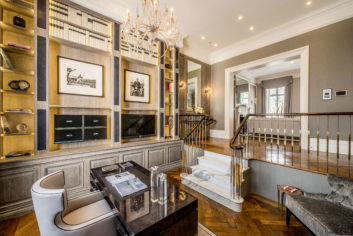 Where AoIP is concerned, many loudspeaker brands, like other products for pro AV applications, have been through a considerable amount of R&D to implement this developing form of networking and connectivity. The loudspeaker – in its most general form – is also a good example of a product that is used in both commercial and residential settings. There are, of course, differences in terms of build and power handling, which is why manufacturers have different ranges for each.
Where AoIP is concerned, many loudspeaker brands, like other products for pro AV applications, have been through a considerable amount of R&D to implement this developing form of networking and connectivity. The loudspeaker – in its most general form – is also a good example of a product that is used in both commercial and residential settings. There are, of course, differences in terms of build and power handling, which is why manufacturers have different ranges for each.
Sami Mäkinen, business manager for AV installation at Genelec, explains that the company has three target sectors: PRO (encompassing professional studios, home studios and broadcast), Home Audio and AV.
“These all share the same sound quality and [we are seeing] our PRO products being used in homes for high-end listening,” he says. “This is a growing trend [because] active speaker technology is well suited to simple, high-end home set-ups with less cabling and fewer devices. People are also able to calibrate the systems using our GLM software for operation in environments without acoustic treatment, such as living rooms.”
PMC is a loudspeaker company that has taken a slightly different route into resimercial. Originally established as a designer and builder of specialist monitors for recording studios, PMC produced its first hi-fi product around 1999-2000. Commercial director Oliver Thomas – son of Peter Thomas, who founded PMC in 1991 with Adrian Loader of FWO Bauch – tells us that today the firm’s business is split 50/50 between studio and hi-fi.
Within this, however, a third market involving commercial installations has begun to emerge. Work in this sector has included audio systems for exhibits at Tate galleries, the Kraftwerk Expo in the Design Museum and the Rolling Stones Unzipped exhibition, plus providing loudspeakers for restaurants and bars.
“The ci range was designed for both studios and home theatre but we are also seeing it go into bars and clubs,” Thomas comments. “A number of installers are now using studio products for environments that are not a studio. Sonically the products are the same but they are optimised for different markets. We have also seen a change in the market, with hi-fi developing into this other area of residential, which is more pro.”
PANDEMIC INFLUENCE
James King, marketing director of both long established touring/installation loudspeaker manufacturer Martin Audio and the recently launched Optimal Audio, which is aimed directly at commercial sound, observes that the Covid pandemic might have played a role in more residential products being used for pro projects.
“As venues have re-opened, there has been a surge in loudspeaker/amplifier installs,” he says. “With the industry facing ongoing supply chain challenges, scarcity of products may necessitate more consumer-based alternatives being sought by venues or integrators.”
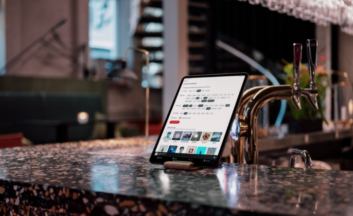 King adds that, as ever, budget is a major consideration and with people being more financially cautious as they build their businesses up again following the pandemic, there could be some pragmatism in using consumer products. Another factor, he says, is that cafes, restaurants and bars may be more familiar with hi-fi/consumer brands rather than pro AV equipment, which would influence any buying decisions.
King adds that, as ever, budget is a major consideration and with people being more financially cautious as they build their businesses up again following the pandemic, there could be some pragmatism in using consumer products. Another factor, he says, is that cafes, restaurants and bars may be more familiar with hi-fi/consumer brands rather than pro AV equipment, which would influence any buying decisions.
“Fortunately, we have not lost out to these trends and have experienced a surge in demand over the past six months,” he says. “Martin Audio has had some amazing home cinema and home ‘club’ system installations over the years but it’s on the fringes of what we do. With Optimal Audio, the ethos is more around simplicity of product choice, integration and usage but, again, [resimercial] doesn’t currently form a core to our marketing effort.”
Mike Beatty, managing director of specialist home theatre AV distributor Pulse Cinemas, acknowledges there is some “mixed use” of equipment in pro
and residential, which might be due to a misunderstanding of the differences in technologies by both clients and integrators. “That’s not to say crossover between the two sectors is always a bad thing, it can work really well if the product fits a given situation,” he says. “Integrators should always consider what would be the most appropriate products for the application.”
IT INFLUENCE
Even though there is some commonality between pro and consumer equipment, something that is increasing due to the ever-growing influence of IT, it does not mean that it is easy for an installer to move quickly and seamlessly between sectors.
“We were residential integrators and it took us years to move into the commercial sector,” says Michael Sherman, chief executive of French residential and pro integrator Henri, which now has a successful parallel business installing AV systems in hotels. “We got in touch with suppliers, tested products in our lab and brought in new engineers. But on the first project we discovered delivering a hotel, with all the project management, is not the same as working on a big house.”
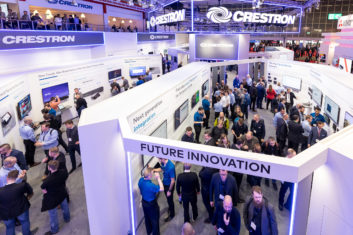
Finnish pro AV installer Audico, which covers the whole Nordic region, is seeing more residential equipment being requested for commercial projects. “There is a constant need to integrate some consumer technologies, such as AppleTVs, PlayStations, Xboxes and some Bluetooth audio devices into our pro installations,” says Santtu Sipilä, head of technology and software at Audico.
“Some customers want to include consumer entertainment devices in workplaces [where the] rest of the systems are pro AV. Consumer gear is usually designed to be easy to use and therefore many adjustment possibilities that are found in pro gear are missing. Also, control APIs are lacking compared to pro equipment.”
There is now more acceptance of consumer technology being used in the commercial sector. Similarly, there are professional system that lend themselves well to residential situations. But, as has always been the case in both markets, the choice of kit should always come down to what is best for the job and not just because it fits in with a trendy buzzword.
BOXOUT: INTERIOR AESTHETIC
The term resimercial is also applied to a form of interior design in which the aesthetics of the home are applied to business environments. That kind of crossover was responsible for high-end residential installer Knektd Integrated Media’s move into commercial integration. The company had been best known for providing fully connected systems, combining home theatre, automation, IT and CCTV, for prestige clients living in some of the richest districts of London, including Mayfair, Belgravia and Kensington. (The above is an installation in the study of an apartment in Eaton Square, Belgravia.)
One of these clients runs a small chain of boutique fitness centres with branches in Knightsbridge, St John’s Wood and Kensington. Knektd director Shaun Wilson explains that after completing the house installation, he was asked to look at installing an AV system in one of the gyms. “The client was way ahead in what he wanted and asked for the gym to look like a cool house,” Wilson says. “That’s when we became a resimercial installer. We went on to do the other two sites and since then have also worked on high-end restaurants.”
Knektd’s initial installation in what was a new field for it at the time is considered the first fully integrated Crestron-equipped gym in the UK. Wilson prefers to describe this side of his business as ‘bespoke’ rather than commercial because the installations are tailored to very specific briefs with an emphasis on the look as much as the sound. In addition to Creston, Kenktd uses K-array and Genelec products from the pro side of resimercial as well as Sonance on the residential side. Sonance pendant loudspeakers were used in a Belgravia restaurant, fitted in rows to get coverage but also to match the interior design.
“We hadn’t thought about commercial before, we were happy with residential,” says Wilson. “But when we were asked to do that first job we jumped at it because it was a change. For us it’s all about the right projects. We’ve been lucky enough to pick them up because of what we’ve done before. We wouldn’t do a standard boardroom. The kind of [commercial] projects we take on have to be out of the ordinary.”


